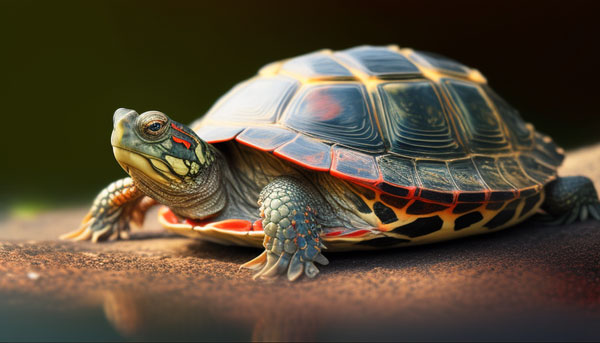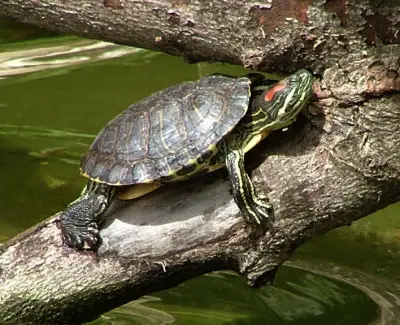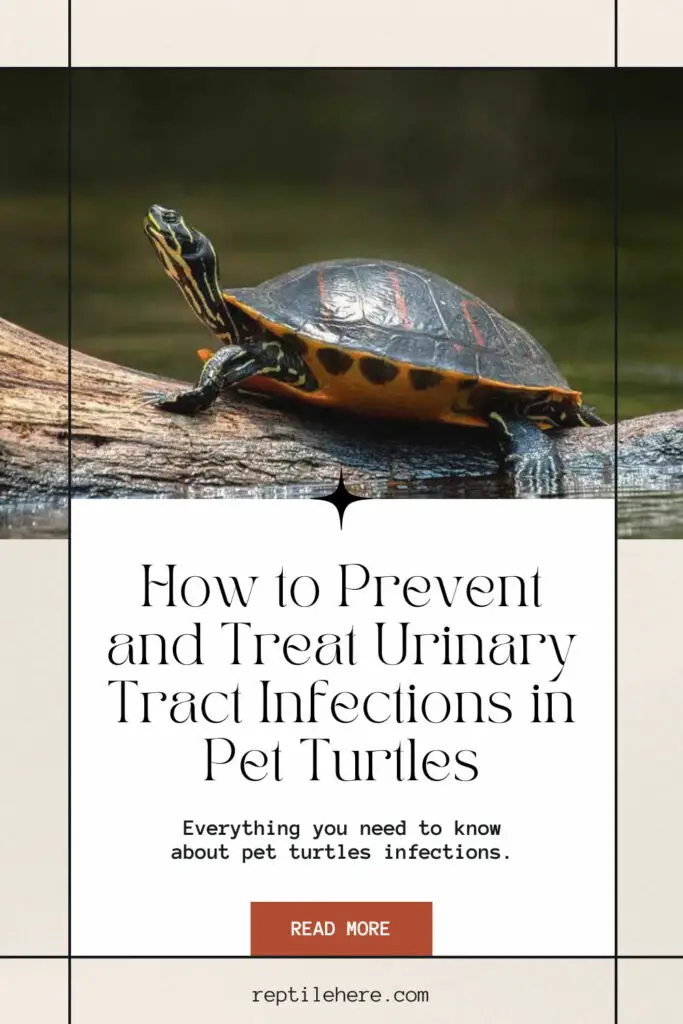How to Prevent and Treat Urinary Tract Infections in Pet Turtles
Among the different diseases that can affect your pet turtle, some target its urinary tract. These are usually known as urinary tract infections (UTIs) and are caused by issues like poor water quality and overall poor hygiene in your turtle’s habitat. They can cause pain and discomfort in your shelled friend, and may even lead to life-threatening complications.
The following article will teach you everything you need to know about urinary tract infections in pet turtles. You’ll learn the potential causes behind these infections of your turtle’s urinary system, the treatment options available, and the different methods you can use to shield your turtle from these infections.
How to treat and prevent turtle urinary tract infections
Contents
To understand how to prevent or even treat UTIs in your turtle, you’ll first need to understand their causal agents.

Common causes of urinary tract infections:
Poor hygiene
This is one of the main culprits behind your turtle getting a urinary tract infection. When you keep your turtle’s environment dirty and unhygienic, you give the harmful bacteria favorable breeding grounds to thrive in.
Besides, you’ll also encourage fungi and parasites to thrive in your turtle’s enclosure. When these undesired microorganisms finally enter your turtle’s urinary tract, the result is urinary tract infections.

Water quality issues
Poor water quality is also part of poor hygiene in a turtle tank and will allow bad bacteria to thrive, further increasing the risk of UTIs.
Your turtle may also avoid drinking water if it becomes dirty, leading to dehydration. Dehydration then makes your turtle urine concentrated with acidity, increasing the risk of urinary tract infection.

Irrigation is another way dirty water can cause UTI in pet turtles. When irritated or inflamed, your turtle’s urinary tract may become even more vulnerable to harmful bacteria and fungi.
Parasites
Parasites can also cause urinary tract infections in your turtles. A good example is the Flagellates, a protozoal microorganism that is known to cause an infection of the urinary tract in pet turtles and other reptiles including snakes and tortoises. (Source).
These parasites can get to your turtle through contaminated food, water, or soil. Note that flagellates are usually found in dirty and stagnant. This means keeping your turtle enclosure dirty will encourage these parasites to thrive.

Unfortunately, turtles carrying parasites generally don’t display any symptoms. So, it can be hard to tell if your pet is infested unless you usually take your pet to a vet for regular checkups.
However, some turtles may show signs such as lethargy, loss of appetite, diarrhea, and vomiting. In some cases, blood may be present in your turtle’s waste.
This study involving the urinalysis of box turtles further proves that flagellates in the turtle feces are a risk factor for urinary tract disease in turtles.
Once your turtle is diagnosed with this parasitic infection, your vet will likely recommend antiprotozoal and Anthelmintic medications to kill the parasite colonies in your pet’s body.
Improper diet
If you feed your turtle an inappropriate diet, it can easily alter the urine composition and make it more acidic—thus favoring the breeding of bad bacteria.
A good example is a high-protein diet which makes your turtle’s urine to become more acidic. This makes it an ideal ground for harmful bacteria to grow.
Too much protein in your turtle’s diet can also overwork its kidneys and possibly cause kidney damage, which also increases the risk of UTIs.
Lack of a balanced diet can also weaken your turtle’s immune system and make it more vulnerable to various diseases, including UTIs.
A perfect example of a urinary tract issue arising from a poor diet is cystic calcluli…

Cystic calcluli is also known as bladder stones and is usually characterized by minerals from your turtle diet forming crystals in urine.
These crypts then stick together to form stones—the bladder stones. The cause of this disease in turtles is improper diet and dehydration. (Source).
Common symptoms of bladder stones include the presence of blood in your turtle excretions.
The treatment for this issue involves the removal of the bladder stones which involves surgery as well as fluid therapy to avoid causing damage to the kidney.
Treatment options for urinary tract infections in turtles
The best treatment option for most urinary tract infections in turtles involves medication. After diagnosing your turtle, a vet usually recommends antibiotics to help treat the infection.
Note that the type of antibiotic will depend on the type of bacteria behind the infection, so it’s important to have your turtle diagnosed by an experienced vet first.
You should also continue providing your turtle with supportive care during the recovery process. Essentially, you want to ensure your turtle has access to a clean and warm environment that will help promote healing and reduce stress.

Even after your turtle seems to have recovered, you should ensure you canteen giving it the full dose of antibiotics as directed by the vet.
One more thing…make sure you take care of any issues in your turtle’s environment that may have caused the infection to the urinary tract in the first place.
Whether it’s poor water quality, poor hygiene, improper diet, etc., make sure you address them to prevent the infection from recurring.
Prevention methods for urinary tract infections in turtles
You can prevent urinary tract infections in your pet turtle by practicing good hygiene for your turtle’s living conditions. Practice regular and proper cleaning of its enclosure and get rid of any uneaten food bits and turtle waste that may encourage bacteria growth.
You should also do water changes regularly to avoid the growth of bad bacteria. If you own a box turtle, make sure its water dish is always filled with clean, fresh drinking water to prevent dehydration.
Another way to prevent UTIs in your pet turtle is by monitoring its water quality regularly. Ensure the water pH, ammonia, and nitrites levels are within the recommended levels. This is crucial for ensuring a healthy living environment for your shelled buddy, free of harmful microorganisms.

Give your turtle a balanced diet to help boost its immune system and minimize the chances of a UTI. A nutritious diet for most turtle species should feature not just commercial pellets, but also leafy greens, other veggies, and animal proteins.
Take your turtle to the vet for regular checkups. This step is crucial as the professionals can help detect UTIs when they’re still in their early stages before they develop into more serious complications.
Final Verdict
Urinary tract infections in your pet turtle usually occur due to poor hygiene and water quality issues in your turtle habitats which encourage the growth of bad bacteria. These will then infect your turtle’s urinary tract. UTIs can bring a lot of pain and discomfort to your pet turtle, so you should take all the preventive measures to keep your turtle safe from them.
We have discussed all the potential causes of UTIs in pet turtles and how to prevent them in the above guide. We hope you’re now well informed on what to do to keep your turtle healthy and safe from urinary tract infections and how to treat them if they occur in your pet turtle.


